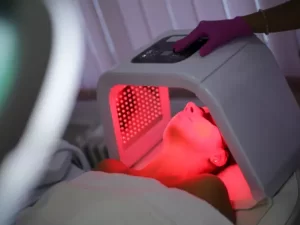Biohacking has advanced significantly since its inception, when individuals first experimented on themselves and merely tracked their health. Initially, it was simple things like getting more rest, taking supplements, and wearing an activity tracker. What we now call “biohacking” is a complex combination of science, technology, and self-awareness. Today’s biohackers want more than just staying healthy; they want to achieve the highest levels of physical, mental, and emotional success. Today, it’s all about targeted, data-driven strategies that deliver real results, often using technology and unconventional approaches to improve all aspects of people’s lives.
How Personalized Data Can Be Used for Biohacking
At the heart of modern biohacking is massive amounts of data. Today’s biohackers are using massive amounts of real-time data to make decisions. Think DNA testing, continuous glucose monitors, and heart rate variability monitors. People can use these tools to gain insight into how their bodies respond to things like food, worry, exercise, and sleep. Biohackers can figure out what this data means and adjust their lifestyle to gain more energy, focus, strength, and longevity. Because every body is different, what works for one person may not necessarily work for another. The data allows for a personalized and precise approach.
Nootropics and Brain Enhancement
A key goal of the next generation of biohackers is to improve brain function. People often refer to nootropics as “smart drugs.” They are among the most talked-about tools in the field. These supplements and chemicals are designed to improve feelings of well-being, memory, focus, and creativity. L-theanine, Hericium erinaceus, modafinil, and piracetam are the most popular choices. Some nootropics work by sending more blood to the brain, while others work by changing the amount of neurotransmitters. They are part of a larger plan and, when used carefully and responsibly, can lead to clear thinking and excellent cognitive function.
Fast Regularly and Optimize Your Metabolism
Another key component of advanced biohacking is metabolic flexibility. Intermittent fasting is one of the most important ways to achieve this. Fasting allows the body to better switch between using fat and carbohydrates for energy. Not only does it help you lose weight, but it also helps repair cells, reduce inflammation, and keep your mind sharp. Some biohackers go further by accelerating ketosis or autophagy through extended fasting, diets similar to fasting, or by combining fasting with specific protein ratios. Such processes can lead to better energy control and longevity through cell regeneration.
Heat and Cold
Biohackers looking to strengthen their bodies and minds are increasingly turning to temperature-based treatments. Research shows that exposure to cold, such as ice baths or cold showers, can reduce inflammation, boost the immune system, and increase dopamine levels. On the other hand, heat therapy, such as saunas, can improve circulation, help the body flush out toxins, and provide similar benefits to cardiovascular exercise. Contrast therapy, which alternates between hot and cold, is thought to speed recovery and support the body’s natural healing process. These exercises strengthen your body and mind and tap into your basal stress response.
Optimize Your Sleep for Optimal Recovery
Experienced biohackers know that sleep is more than just rest; it’s the key to productivity. Deep, restorative sleep restores both the body and the brain. Biohackers use sleep watches to monitor their breathing, movement, and different sleep stages throughout the night. They can adjust the temperature, lighting, and sounds in their bedroom to help the body produce more melatonin and sleep better. Some people even take supplements to help this process, such as magnesium, melatonin, or glycine. One of the best ways to improve your mental and physical health is to get enough, consistent, and quality sleep.
Red Light Therapy and Cellular Energy
Biohacking tools like red light therapy may sound like something from the future, but they’re actually based on real science. They involve shining certain red or near-infrared lights on the body. These waves can travel through the skin and activate the mitochondria, the energy-producing parts of cells. The result is healthier skin, less inflammation, faster healing, and even better muscle function. Many athletes and biohackers use red light devices or screens to provide cells with more energy. This is an approach that supports optimal performance, causes no harm, and is becoming increasingly popular.
Gut Health and a Balanced Microbiome
Biohackers are increasingly focusing on the health of bacteria because the gut is vital to both physical and mental health. More advanced plans involve people taking certain probiotics, eating foods rich in prebiotics, and having their stool tested to find imbalances. A well-functioning gut helps the body digest food, boost the immune system, and even produce neurotransmitters like serotonin. Biohackers are trying to tackle brain fog, boost immunity, and keep people healthy in the long run by fine-tuning their microbiota. It’s a system that affects the way we think, feel, and behave in our daily lives.
Peptides and Regenerative Therapies
Peptides are short chains of amino acids and are responsible for sending messages throughout the body. When it comes to biohacking tools, they’re some of the newest and coolest. Peptides can help you lose weight, build muscle, heal an injury, or sleep better. BPC-157 for therapeutic purposes and TB-500 for tissue repair are two well-known examples. Under the guidance of a physician, peptides show promise for people who want to push their bodies beyond their normal limits. They’re at the forefront of biohacking, a field that studies how to improve performance and healing.
Mindfulness and Keeping the Mind Strong
Biohacking isn’t just about gadgets and pills. Training your mind is equally important. Mindfulness techniques, such as meditation, breathing exercises, and imagery, can help people focus, reduce anxiety, and gain more control over their emotions. By doing this, biohackers can better manage stress and make better choices when under pressure. Mental resilience is believed to be just as important as physical strength, especially in busy and difficult circumstances. By training the mind, people can learn to respond rather than react. This type of training can have a major impact on their personal and professional lives.
Conclusion
The next phase of biohacking is a complex combination of science, technology, and self-awareness. It goes beyond healthy habits and focuses on learning and improving the body and mind. Biohackers utilize a diverse range of tools to maximize these abilities. These tools include nootropics, red light therapy, peptides, and mindfulness. Personalization—an approach that is tailored to each individual’s biology and data—is essential to the effectiveness of these approaches. The ideas behind advanced biohacking are changing the way we think about health, aging, and human capabilities. However, individuals may choose different methods based on their needs and preferences. If you want to live your best life, next-level biohacking is one way to do it. It combines curiosity, discipline, and new ideas.
FAQs
1. Can everyone biohack?
Some biohacking techniques are not for everyone. It’s essential to talk to a doctor, especially if you’re trying more complex treatments like peptides or nootropics.
2. If you’re new to biohacking, what’s the best way to start?
An effortless and safe way to get started with biohacking is to focus on getting enough sleep, eating healthy, and exercising regularly.
3. Can biohacking really improve brain function?
Yes, nootropics, meditation, and sleep tracking can improve your memory, focus, and overall brain function if used correctly.
4. How much do biohacking tools cost?
Some tools, like watches or red light therapy devices, can be expensive. However, there are many useful techniques, like fasting or breathing exercises, that are free or very cheap.
5. How do I know if biohacking is working?
You can determine whether an approach is working by tracking data such as sleep quality, mood, energy levels, and physical performance.



